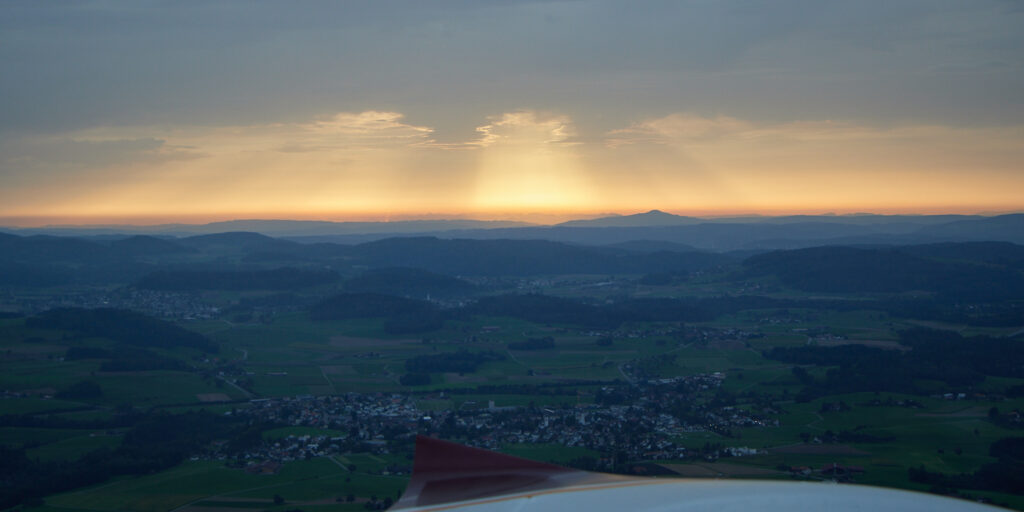11.09.2021: My friend from Denmark posted a video on Youtube taken during a recent flight we did with HB-YNL to Matterhorn and Samedan Airport (https://www.youtube.com/watch?v=PdyeRmSj3Yw). Someone who watched that video noticed the placard saying:

He was wondering why the placard states 630 kg as max take-off weight, even though the SportCruiser is certified for 600 kg.
I have described the process of increasing the MTOM on various pages of the building log, (March 2010 to June 2010), but decided to do a more detailed descriotion on how I did that.
When I built my kit, some of the British builders (most of the around 150 produced kits were built in the UK) complained about the higher than expected empty weight, which limited their useful load. I therefore asked Chip Erwin, the founder of the company from which I bought the kit, which at that time called Czech Aircraft Works or CZAW, whether it would be possible to increase the MTOM in the Experimental category. In that category, each aircraft is certified as an individual aircraft rather than based on a type certificate, and on individual flight testing.
When I selected the SportCruiser from a number of alternative kits I went to various suppliers to test fly their aircraft, and to have a closer look at the kits and their quality. When I visited CZAW, Chip pointed out that the SportCruiser was much more robust than competing products, as it had originally been designed with the European VLA (Very Light Aircraft) plane category in mind, which specifies an upper limit of 720 kg as MTOM. At around the same time however, the US FAA introduced the so called LSA (Light Sport Aircraft) category. That category not only significantly relaxed requirements for plane certification, but also permitted pilots to fly such aircraft with a much easier to get pilot licence and reduced medical requirements, compared to the regular PPL. The FAA however specified 1320 lbs / 600 kg as MTOM, together with some other limitations, such as no more than two seats, a fixed pitch propeller, no retractable landing gear etc.. The LSA category was subsequently also adopted in Europe by EASA.
As a result, many light plane suppliers focused on getting their planes certified in that category, for which a large boom was expected, which however only happened to a certain degree. Anyway, some ultralight planes where strengthened to increase the MTOM (with limited success), while some VLA certified planes were made lighter to fit into the LSA category (again with limited success). CZAW had nearly finished certifying the SportCruiser, including most stress testing, so they essentially just limited the MTOM weight to 600 kg with no changes to the structure, and repeated all certification flights with that weight.
Chip however liked my idea to increase the MTOM, so he gave me all the necessary design data, including calculations, as well as the data from the stress test they had done. The wing for example did not break in the ultimate load test, there was only some deformation in the wing center section happening when loading the wings way beyond the required limit, with similar results in all other tests. While he never stated what the original design weight of the structure was, that must have been significantly above 600 kg. Based on the design data I have, I’d guess it was around 650 kg or even more.
As a result, an increase of the MTOM seemed possible, to even more than 630 kg, but unfortunately the landing gear testing had only been done with an MTOM of 600 kg. Again, increasing that weight would have been possible and the manufacturer of the landing gear legs, which whom I got in touch, even proposed to produce legs for a higher weight. That however might have required a new drop test, which I of course didn’t want to do. A fellow homebuilder pointed out that even on a light plane, the take-off mass can be higher than the landing mass, but only by 5%, so I decided to use that path to increase the MTOM. That gave me an additional 30 kg of MTOM while retaining the 600 kg landing mass. As my plane was light compared to some of those built in the UK, ending at 369 kg empty mass, that gave me 261 kg of useful load at take-off, which leaves around 35 kg for baggage whent taking off with full fuel and the two of us on board.
I discussed the MTOW increase with the structural engineer of the Swiss Experimental Aviation Association EAS, who is our contact point for discussions with the Swiss Federal Office of Aviation FOCA, and he proposed an even easier way of getting the increased MTOW accepted for my case. Instead of writing an extensive report, supported by complex calculations, he proposed to reduce the ultimate load for which the plane shall be certified from 4 g, which is the value to which the LSA SportCriuiser is certified, to 3.8 g, which is the value required for “normal” light planes in FAR-23. Most light aircraft from Cessna, Piper and other manufacturers are certified to that limit. By doing this the flight loads actually don’t increase, as 3.8 g x 630kg is equal to 4 g x 600 kg.
I then put all of these argument into a short report, which we forwarded to FOCA, and which was subsequently accepted without a single question asked. I then did all test flights during the flight test campaign with the 630 kg MTOM, where relevant, and used that data to write the pilot operating handbook.
A fellow SportCruiser builder from Sweden read about my MTOM increase on my website, so I forwarded him the documents I had sent to FOCA and he also got the MTOM increase accepted by the Swedish Civil Aviation Authority with no further questions. Also the second SportCruiser built from a kit in Switzerland got certified to that MTOM.
12.09.2021: I found time to go flying this afternoon, and despite the weather being not too nice I took the chance. There was a fairly low layer of clouds in the plains, but the forecast predicted this to be only broken towards the mountains. So after taking off I went straight south, crossing the Ricken pass towards the Linth area.
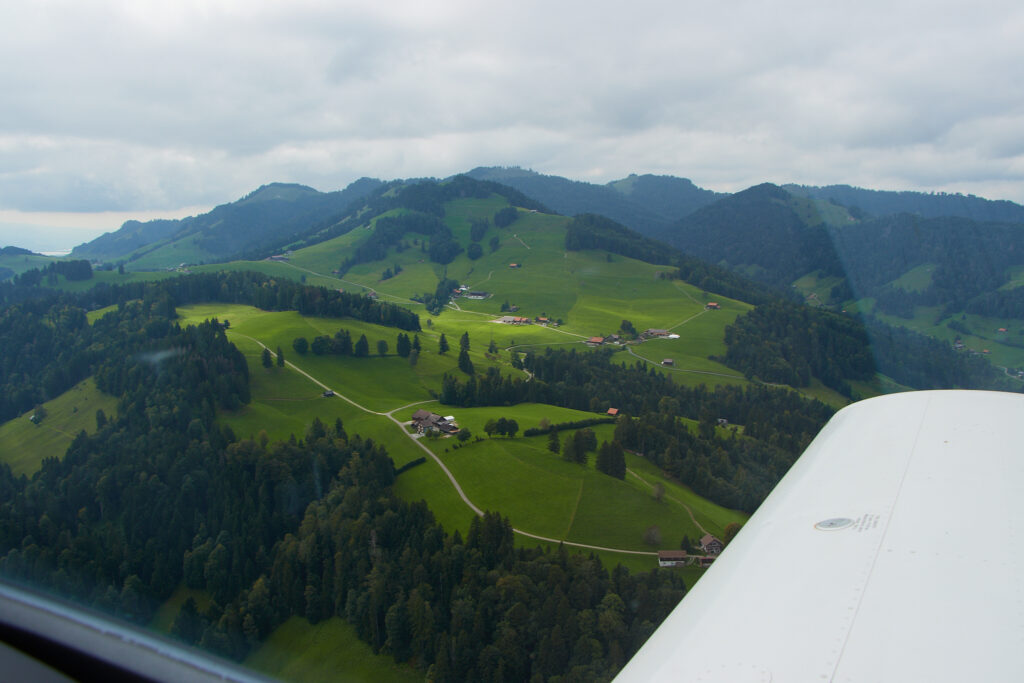
There I found a hole in the cloud layer large enough to climb on top, which gave me a first great view of the mountains partially hidden in cumulus clouds.
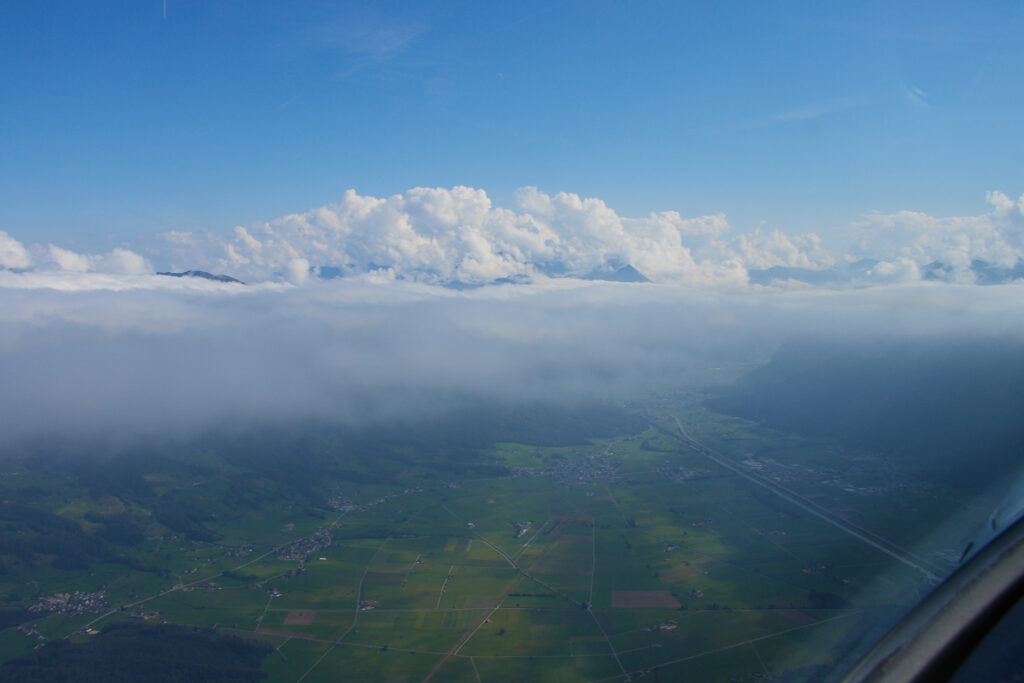
The closer I got to the mountains, the more open the low layer of clouds got, just as predicted in the forecast.
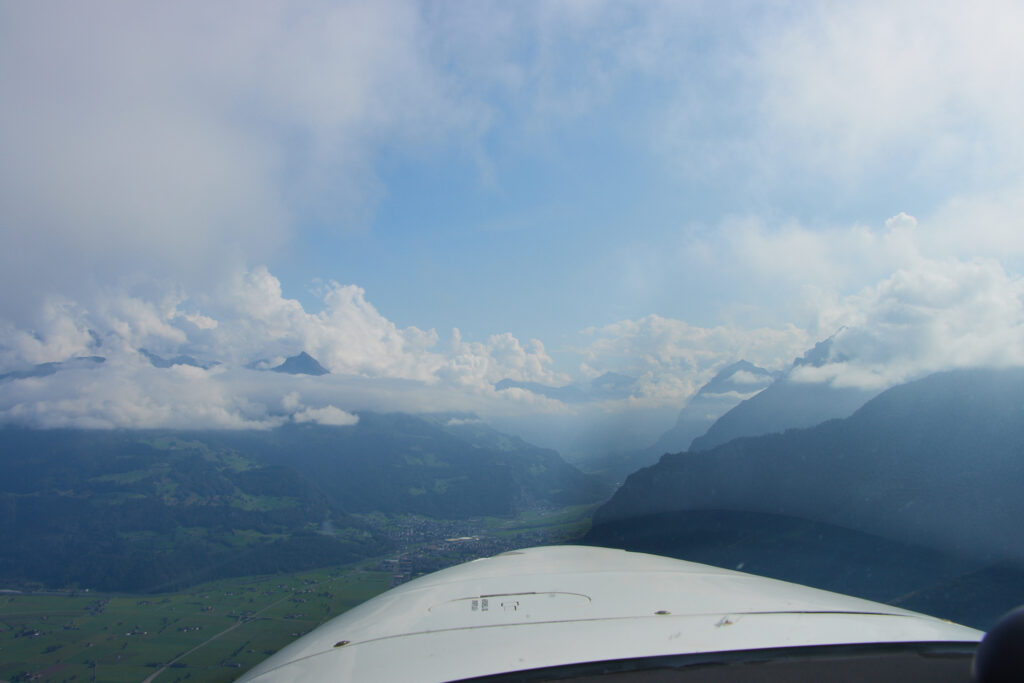
The view of the mountains hidden in clouds were just spectacular, as can be seen in the next few pictures.

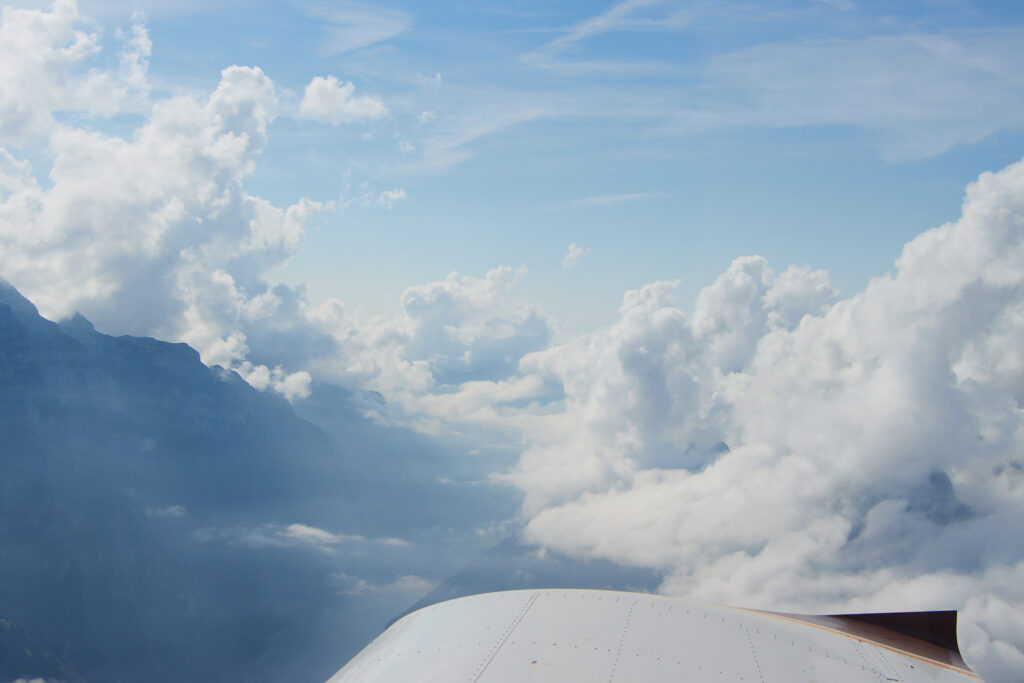
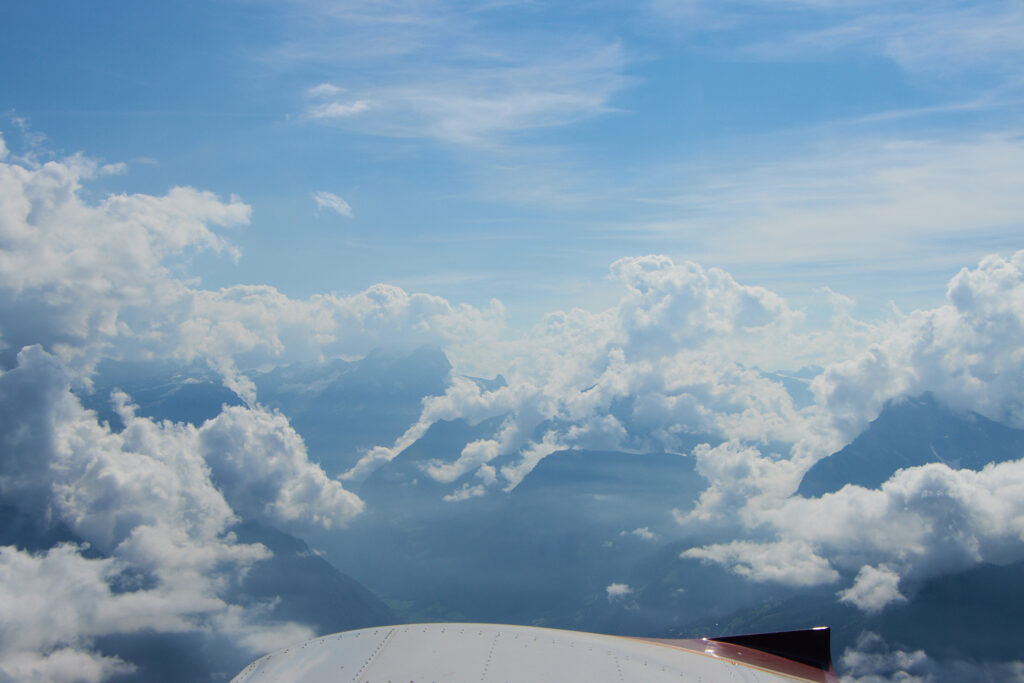
I climbed up to FL120, as I often do, I just love the views from that far up.

After circling around clouds and mountains for nearly an hour I turned back, with Säntis also largely hidden in clouds.
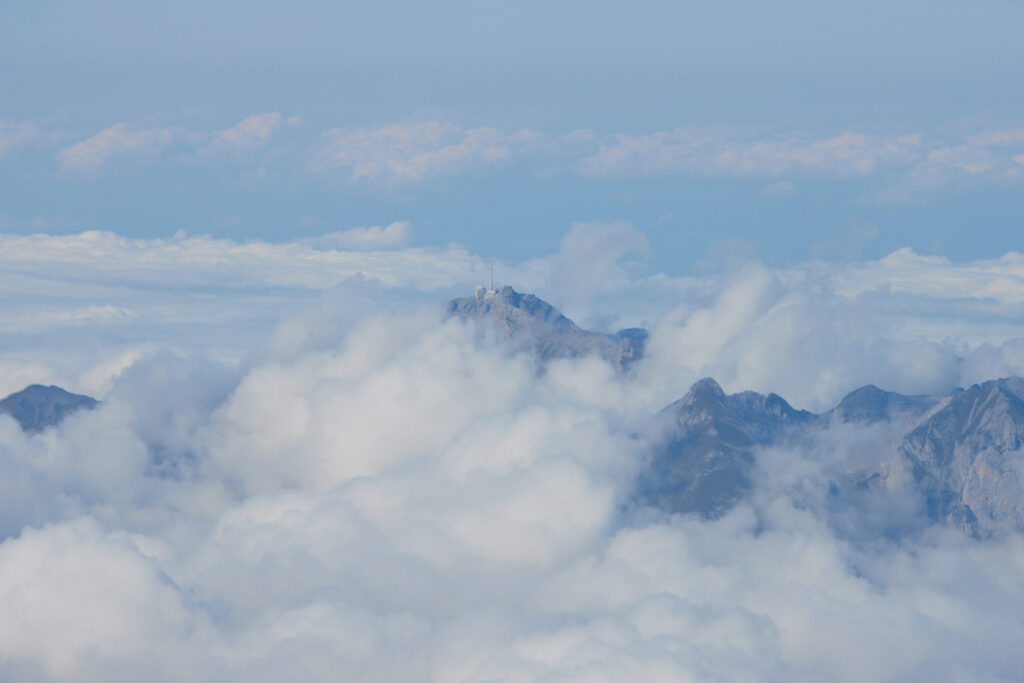
Heading back towards Lommis I went back under the cloud layer still present over the plains, it however started braking up.
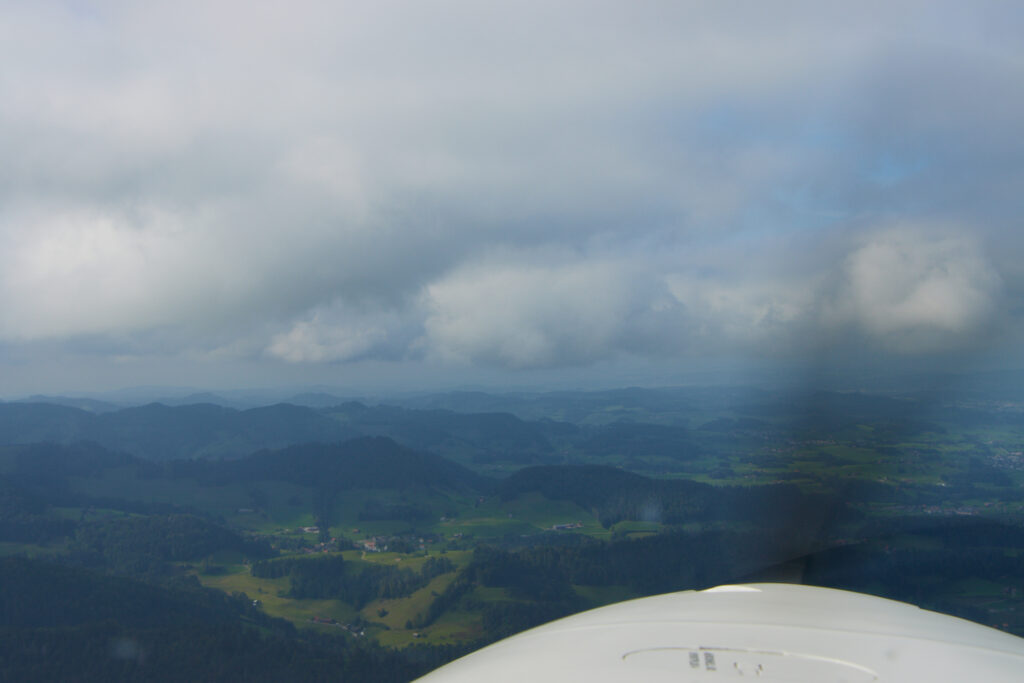
Below a view of the area near Ricken pass where I started my flight.

By the time I returned to Lommis only scattered clouds remained….

…and Lommis airfield was in full sunlight. Impressive, how fast conditions can change, I was airborne for only one hour and fiveteen minutes.

22.09.2021: Another slot for flying opened up today, again with a promise of some nice autumn weather. The only problem with autumn in Lommis is a low layer of fog, which we often have at the airfield. That might prevent us from taking off, even though there is perfect weather for flying only maybe one or two hundred feet above the airfield. Today was one of these days, but as the fog sometimes clears later in the afternoon I headed for the airfield at around 15:00 local time.
The fog took some more time to clear, so I only took off at 17:00, with sunset at 19:22.
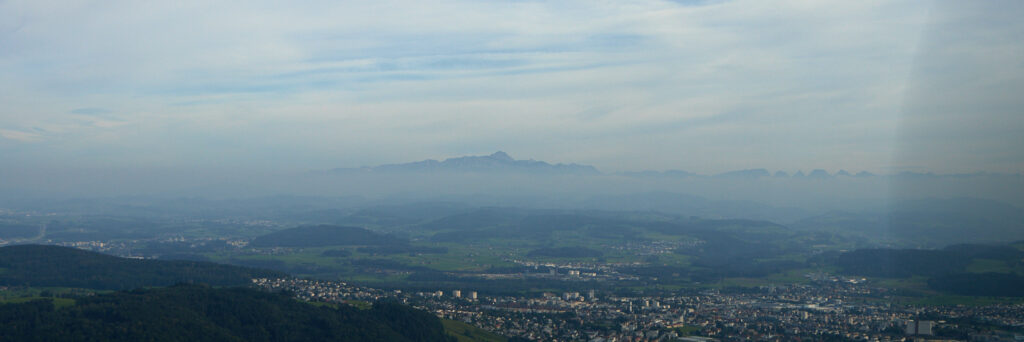
As can be seen above and below there was quite some haze, with a broken layer of high clouds, at around FL100 or above.
I went straight for the mountains, as I do on most flights, especially when there is haze in the plains. Needless to say that when I switched my radio to Zurich Information there was utter silence. The only other plane i saw was also preparing to take off when i left, a flight student with his flight examiner getting his PPL checkride. They seemed to have been waiting since after lunch for the fog to clear.

The more I got into the mountains, the thinner the haze got, and above 5’000 ft visibility was nearly unlimited.

I passed the Säntis,with only a small number of visitors on the outside terrace, but of course the season is coming to an end and it is late on a Wednesday afternoon.
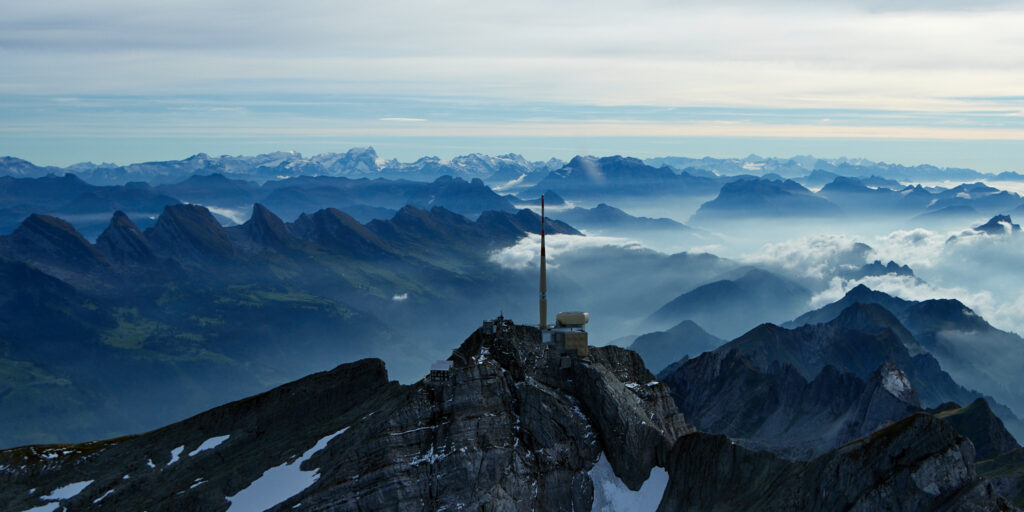

Over the Tödi I saw a lone lenticular cloud, it had hearly the shape of a flying saucer…

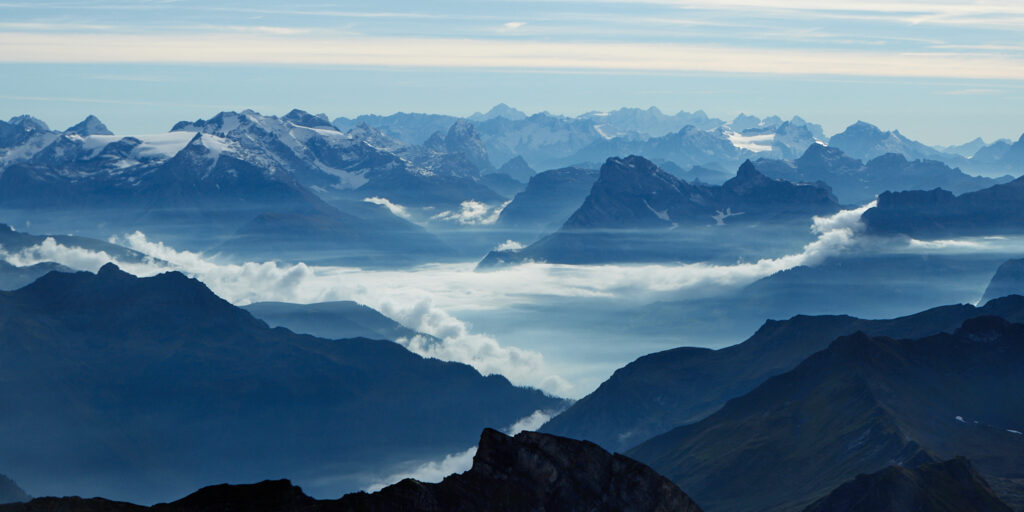
After being airborne for around an hour and a half the light started to change, giving everything a yellowish tint.

I therefore decided to head back, as the airfield lies in the shadow of some hills, meaning it can get quickly pretty dark after sunset.
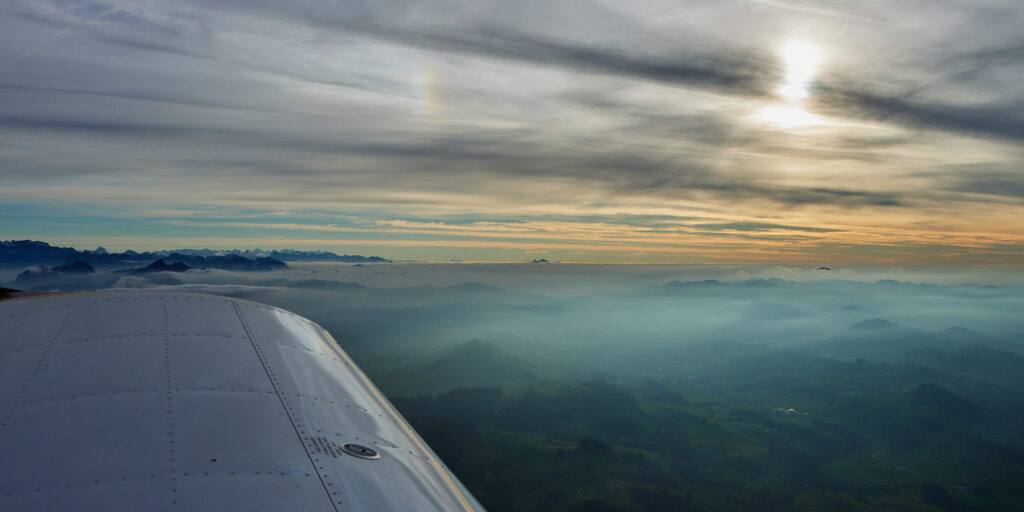
I was still sitting in my plane when the fligth student on his checkride landed. The moment he had parked I could see a big grin on his face, indicating that he had passed the test.
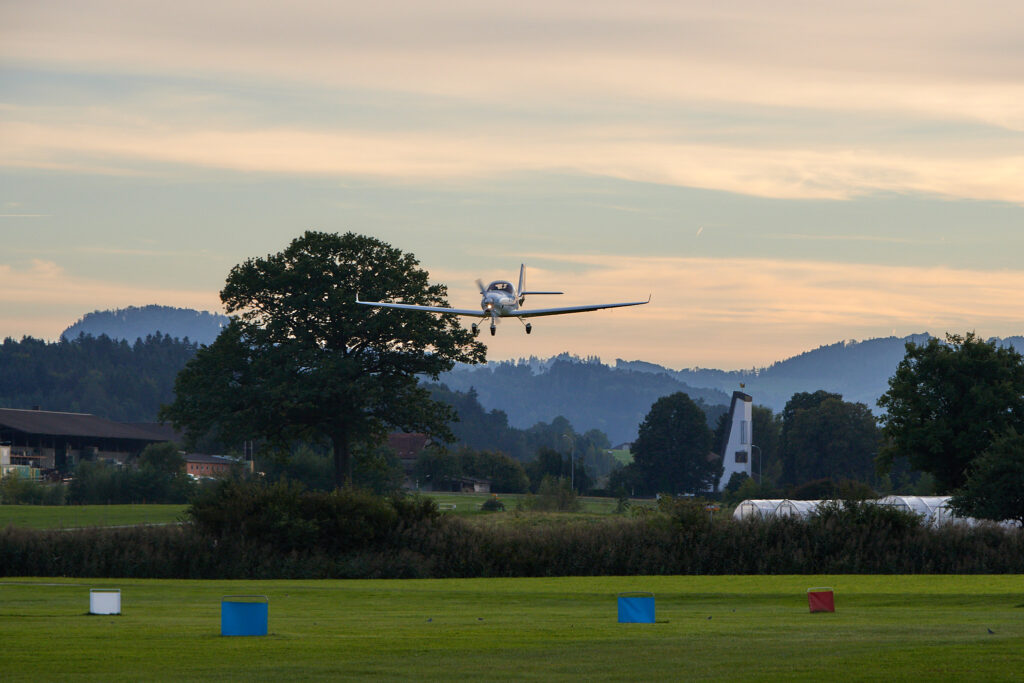
25.09.2021: I didn’t think on Wednesday that I would be up in the air again three days later, but due to some external circumstances I go the chance. We decided to go and see some places from above where we have been hiking recently. The weather was ok for flying, but not the kind of weather most hobby pilots prefere, so needless to say we were nearly alone in the air.
We started from Lommis direction Lake of Zurich, passing the Hörnli, the highest hill in our area (1’133 m / 3717 ft), from where one has a spectacular view on the alps.
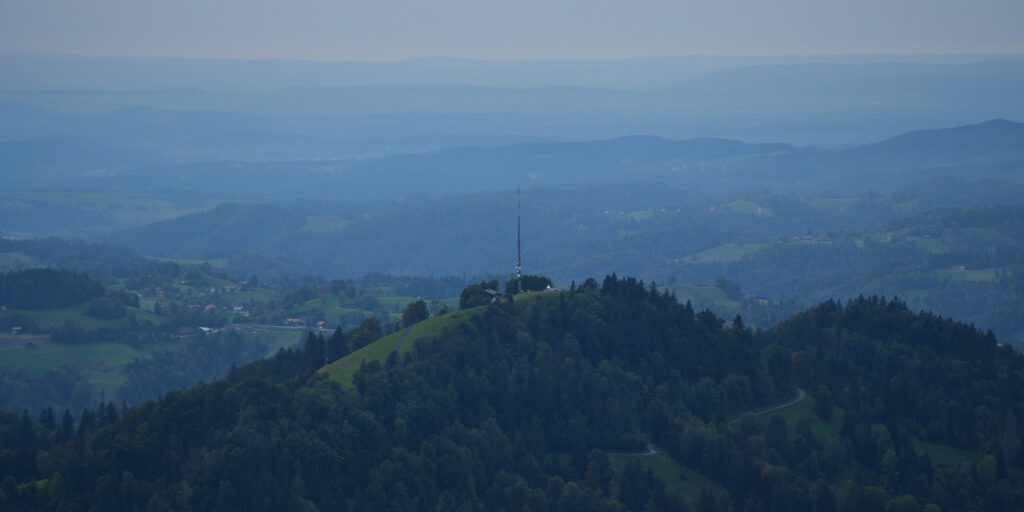
We then passed the Pfäffikersee (Lake of Pfäffikon), around which there is a nice hiking path of around 10 km length. That’s one of the hikes we made recently, which takes around 2 1/2 hours.

Next we passed the Greifensee, which is larger than the Pfäffikersee, the hiking path around that one is 20 km long,
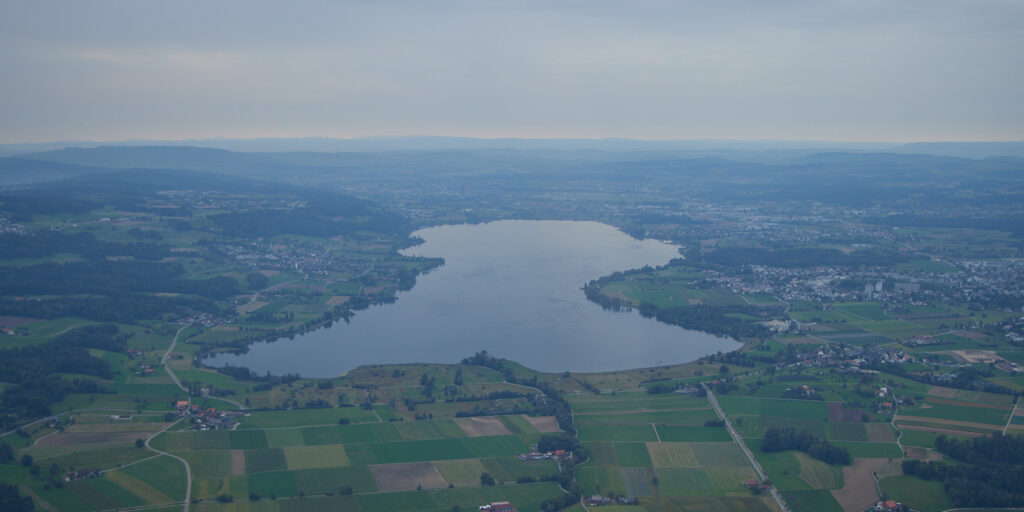
From there we saw the Uetliberg, around 20 km / 10 miles to the west, right next to the city of Zurich.
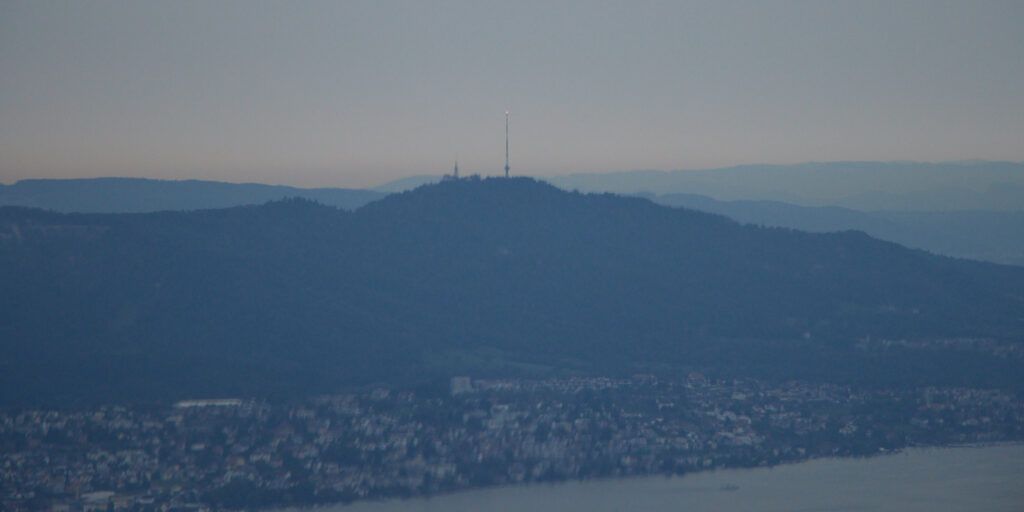
We however decided to turn east, towards Glarus.

We then passed the Klöntalersee, a natural lake created by a large rockslide a long time ago, whose water level has been raised with a dam more than 100 years ago to create the first artificial water reservoir in Switzerland to be used for generating electricity. We were puzzled to see the lake largely empty, just to read the next day in the newspapter that it has been emptied for studying the natural water flows.
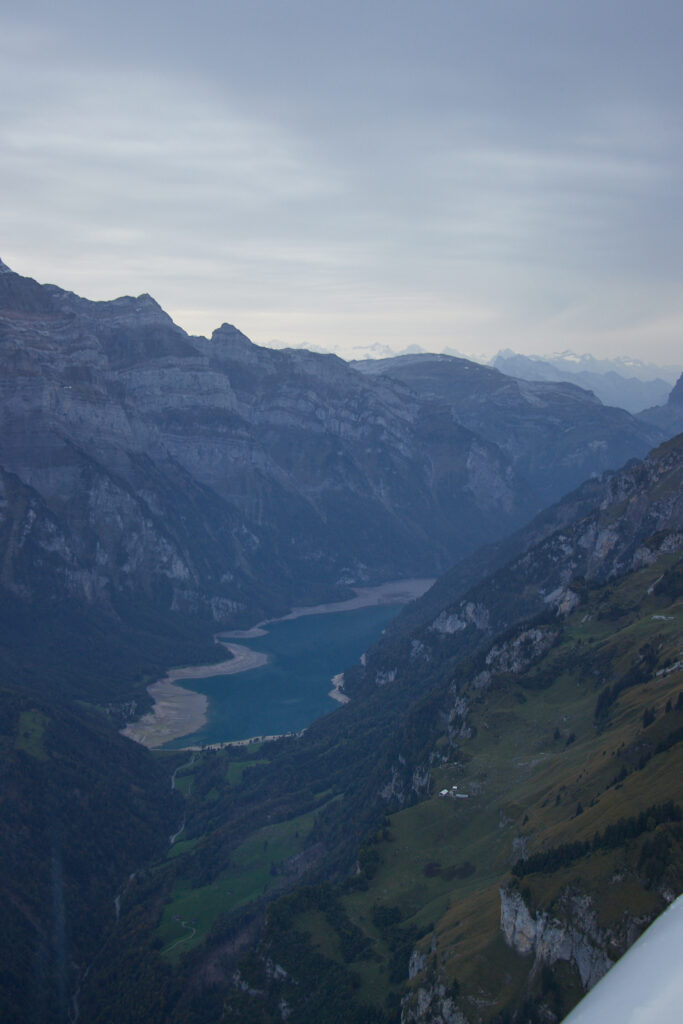
Below a nice view of the mountains, with some rain falling from the clouds.
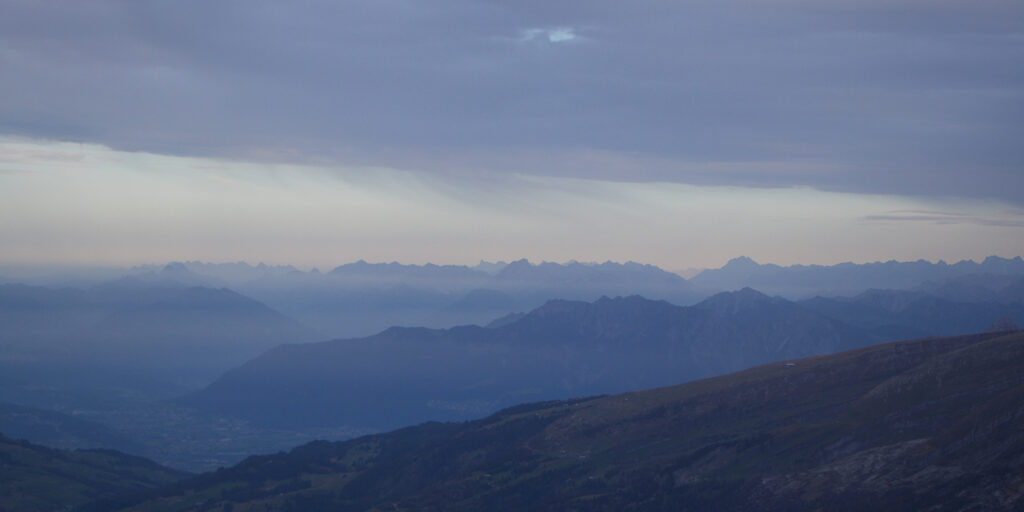
We then headed back towards Lommis, as it started to get dark, with a spectacular view of the sun shining from behind the high layer of clouds.
